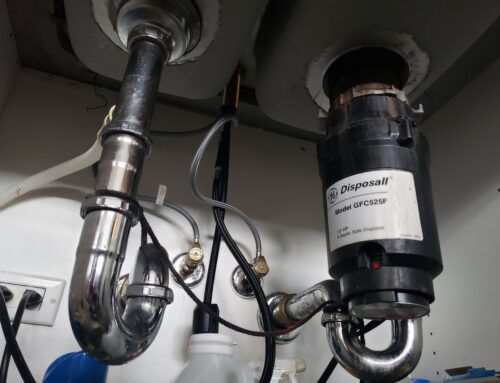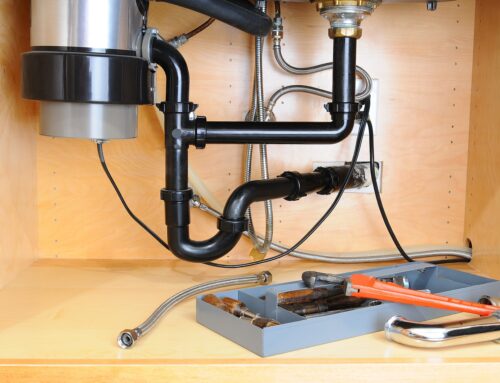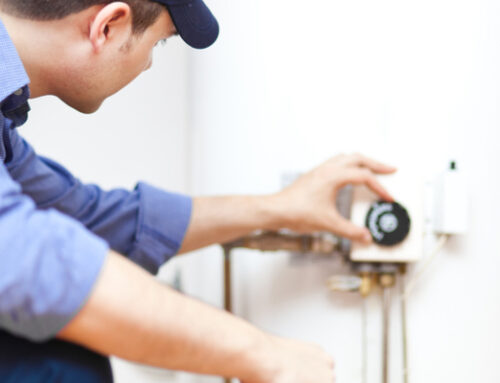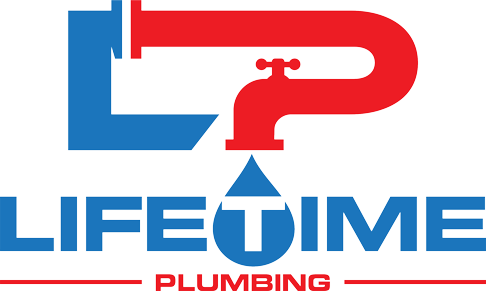Table of Contents
House Sewer Line Diagram
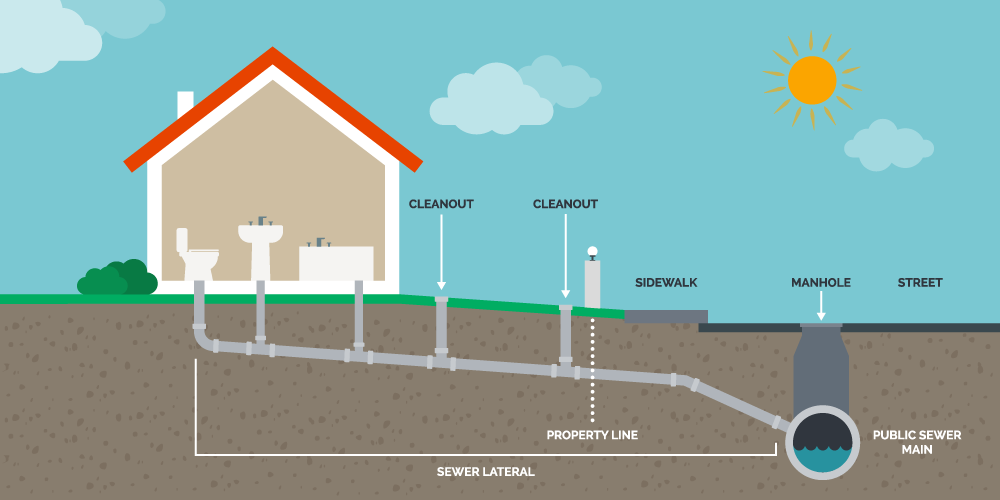
A house sewer line diagram is a visual representation of the plumbing system’s layout, illustrating the interconnected network of pipes and fixtures that manage wastewater flow within a property. Understanding this diagram is crucial for homeowners as it provides insights into the infrastructure that supports a functional plumbing system and helps in identifying potential issues.
Fixture Drain
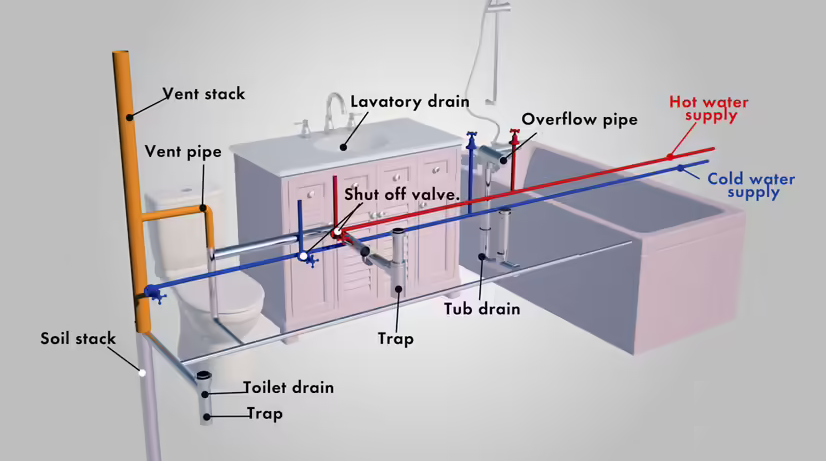
A fixture drain is a crucial component of a house sewer line diagram as it plays a vital role in carrying wastewater from plumbing fixtures to the sewer line. Understanding how fixture drains work is essential for homeowners to maintain a properly functioning plumbing system. Here are some key points to consider:
Types of Fixture Drains
There are several common types of fixture drains that you may find in your home, including tub drains, shower drains, and sink drains. Each of these fixtures has its own designated drain that connects to the main sewer line.
Carrying Wastewater
When you use a plumbing fixture, such as taking a shower or washing your hands in the sink, the wastewater flows through the fixture drain and into the sewer line. It is important to ensure that these drains are properly connected and free from any blockages to allow efficient wastewater flow.
Importance of Proper Venting
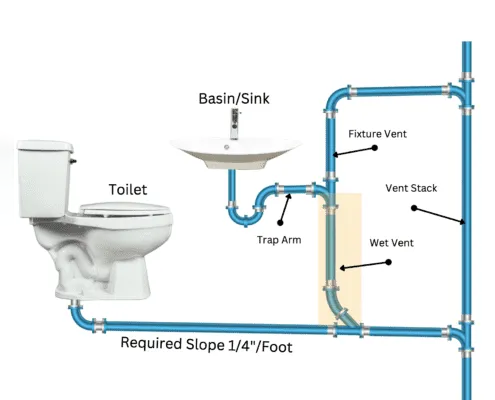
Proper venting is crucial for fixture drains to prevent trap siphonage. Signs of poorly vented plumbing drain lines include slow drainage and foul odors coming from your fixtures. Installing proper vents for each fixture drain helps maintain neutral air pressure and prevents these issues.
Troubleshooting
Regular inspection and maintenance of your fixture drains are essential to prevent clogs and leaks. If you notice slow drainage or foul odors coming from your fixtures, it could indicate a problem with the drain. In such cases, you can try using a plunger or a drain snake to clear any blockages. If the issue persists, it may be necessary to call a professional plumber for further inspection and repair.
Understanding the role of fixture drains in your house sewer line diagram allows you to identify any potential issues early on and take necessary measures to keep your plumbing system running smoothly. By ensuring proper venting and regular maintenance, you can prevent costly repairs and maintain a healthy and functional sewer line system.
Remember, fixture drains are just one component of the overall house sewer line diagram. In the next section, we will discuss another important component – the drain trap or P-trap.
Drain Trap or P-Trap
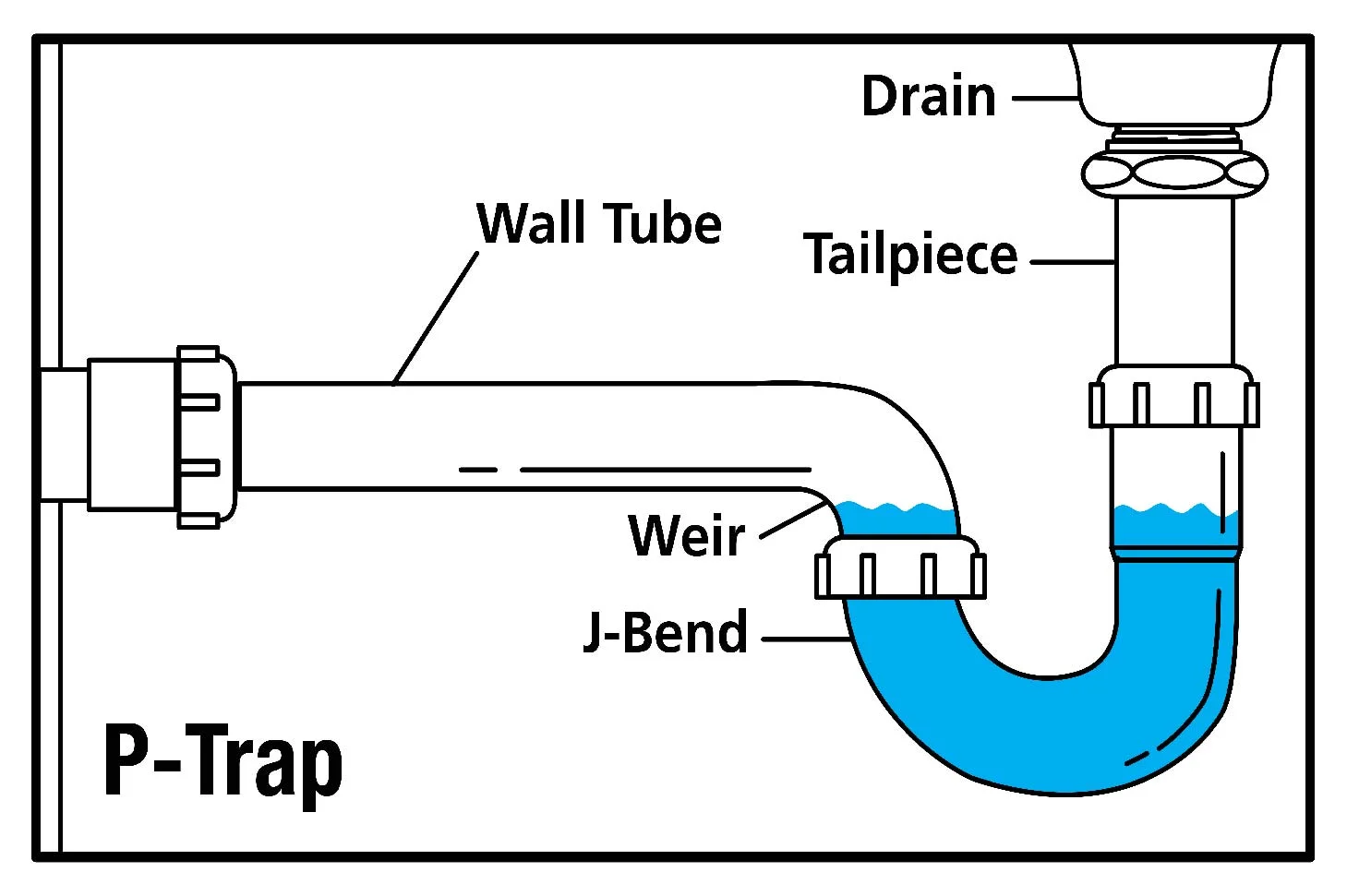
A drain trap, also known as a P-trap, is an essential component of the house sewer line diagram. It plays a crucial role in preventing sewer gases from infiltrating the building by creating a water seal. This U-shaped pipe retains a small amount of water after each use, forming a barrier that effectively stops foul odors and harmful gases from permeating into the living area. Without this seal, it could pose serious health risks to occupants.
Common Issues with Drain Traps
Several problems can arise with drain traps:
Clogs
Accumulation of debris or grease can obstruct the P-trap, leading to slow drainage or complete blockage.
Leaks
Cracks or loose connections in the trap can cause water leakage, potentially damaging nearby structures and exposing individuals to hazardous sewer gases.
Troubleshooting Drain Trap Issues
If you encounter any problems with your drain trap, follow these steps to resolve them:
Clearing Clogs
Utilize a plumber’s snake or auger to dislodge blockages. Alternatively, you can attempt using chemical drain cleaners, but handle them with caution.
Repairing Leaks
Inspect and tighten all connections. Replace any damaged components immediately and thoroughly examine the trap for visible cracks as well.
By familiarizing themselves with these common issues and their respective solutions, homeowners can effectively maintain their drain traps and ensure the optimal condition of their house sewer line system.
Toilet Trap
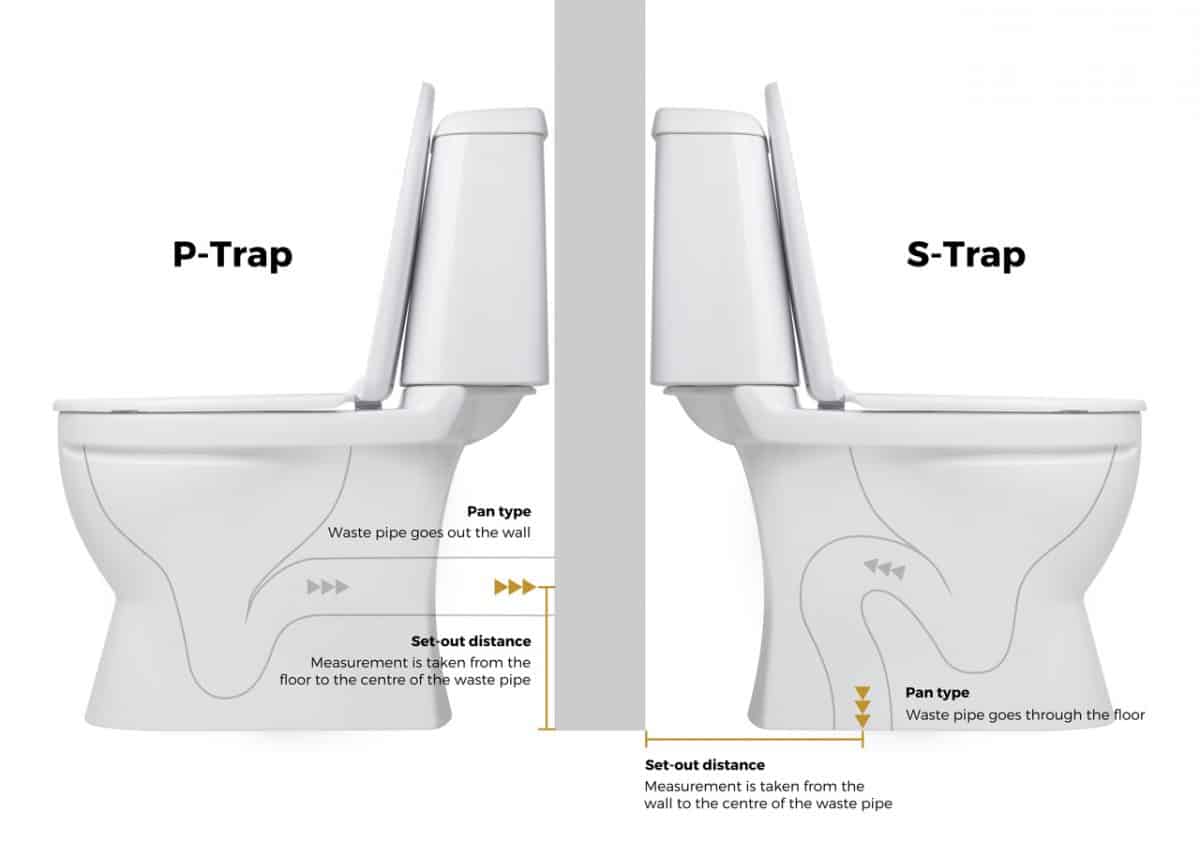
The toilet trap is a crucial element in the house sewer line diagram, playing a vital role in maintaining cleanliness and comfort by keeping out unpleasant smells and pests from the sewage system.
Different Types of Toilet Traps
S-Traps and P-Traps:
- S-traps, which were common in older plumbing systems, have largely been replaced by P-traps due to their tendency to cause the water in the trap to get sucked out.
- P-traps, now the standard for toilet traps, effectively prevent sewer gas from leaking into your home.
The Importance of Regular Toilet Maintenance
Regular toilet maintenance is crucial in preventing the water in the trap from drying up. When this occurs, sewer gas can escape into your home, resulting in unpleasant odors. By staying on top of toilet maintenance, you can ensure that your plumbing system works properly and avoid any potential issues.
Understanding the different types of toilet traps and recognizing the significance of regular maintenance empowers homeowners to proactively maintain their house sewer line diagram, thereby promoting a healthy and functional living space. To extend this knowledge further, it’s worth exploring how other fixtures like shower drains also require traps for optimal functionality and hygiene.
Clothes Washer Standpipe
A clothes washer standpipe is an essential part of a house sewer line diagram. It helps to drain laundry wastewater correctly, prevent overflow problems, and keep the drainage system working efficiently. Here’s what you need to know about the clothes washer standpipe:
Function
The main purpose of a clothes washer standpipe is to create a separate outlet for water coming out of the washing machine. This allows the dirty water to go straight into the house sewer line and away from your home.
Proper Installation
When setting up a clothes washer standpipe, there are a few things to keep in mind for it to work properly:
Height
The standpipe should be installed at the right height so that water can flow out easily. Usually, it’s best to have it between 18 and 30 inches higher than the trap weir level of the fixture drain.
Diameter
The size of the standpipe should match the diameter of the washing machine’s discharge hose. Typically, this hose is around 2 inches wide.
Venting
Proper venting is crucial to prevent airlocks and ensure smooth drainage. Make sure there’s a vent connected to the standpipe, allowing air to enter and stopping any suction or gurgling noises.
Preventing Drainage Problems
To avoid potential drainage problems and overflows with your clothes washer standpipe, here are some guidelines to follow:
- Don’t bend or squeeze the washing machine’s discharge hose, as this can block the water flow.
- Regularly check and clean the standpipe to remove any lint, dirt, or blockages that might build up over time.
- Be mindful not to overload the washing machine with too much laundry, as this can cause water backup and overflow situations.
Overflow Prevention
While a standpipe alone should be sufficient in most cases, there may be instances where it’s not enough to handle a large amount of water. In such situations, you can take extra precautions by installing an overflow pan beneath the washing machine.
Understanding how a clothes washer standpipe works in your house sewer line diagram is crucial for maintaining proper drainage and preventing potential issues. Furthermore, by making sure it’s installed correctly, properly vented, and regularly maintained, you can have peace of mind knowing that your laundry wastewater will be discharged efficiently without any worries about overflow.
Branch Drain Line
The branch drain line plays a crucial role in the house sewer line diagram by connecting multiple fixture drains to the main line. This essential component ensures the proper disposal of wastewater from various plumbing fixtures within the household. It serves as a conduit for transporting used water from sinks, showers, and other fixtures to the main sewer line.
Potential Issues with Branch Drain Lines
Blockages
Solid debris and tree roots are common culprits behind blockages in branch drain lines. Over time, these obstructions can impede the flow of wastewater, leading to backups and potential damage to the plumbing system.
To prevent such issues, regular inspection and maintenance of branch drain lines are necessary. Implementing proactive measures, such as using drain strainers to catch solid debris before it enters the system and scheduling professional root removal services when needed, can help preserve the integrity of the branch drain lines.
By understanding the function and potential challenges associated with branch drain lines, homeowners can take proactive steps to maintain their plumbing systems effectively.
Soil Pipe and Soil Stack Vent
The soil pipe is an important part of the house sewer line diagram. It carries both solid and liquid waste from the building to the municipal sewer system. To keep everything running smoothly, it’s crucial to take good care of the soil pipe.
Why Proper Venting Matters
A soil stack vent is essential for maintaining the right air pressure in the plumbing system and preventing trap siphonage. Here’s why proper venting is so important:
Release of Sewer Gases
The soil stack vent allows harmful sewer gases to escape safely outside, instead of lingering in your home.
Smooth Wastewater Flow
By ensuring efficient venting, the soil stack vent helps wastewater move freely through the pipes, preventing any blockages or backups.
Without adequate venting, you could be facing foul odors inside your house and drainage problems that are both messy and costly to fix.
Choosing the Right Material
When it comes to soil pipes, two common materials are often used: cast iron and PVC (polyvinyl chloride). Each has its own advantages and disadvantages:
Cast Iron:
- ProsKnown for its exceptional durability and resistance to damage caused by pressure or impact. It is also less prone to deformation due to external factors.
- Cons: Relatively heavy, which can complicate installation and maintenance processes. Additionally, cast iron pipes may be susceptible to corrosion over time.
PVC (Polyvinyl Chloride):
- Pros: Lightweight and easier to handle during installation. PVC pipes are also resistant to corrosion, ensuring a longer lifespan compared to other materials.
- Cons: While PVC is highly durable, extreme temperatures can affect its structural integrity, potentially leading to cracks or leaks.
Understanding these material considerations is crucial when planning or undertaking maintenance activities related to the house sewer line diagram components.
By recognizing the role of soil pipes and soil stack vents within the overall plumbing system, homeowners can make informed decisions regarding maintenance, repairs, and upgrades. This knowledge empowers individuals to ensure the continuous functionality of their house sewer line while mitigating potential issues that may arise due to neglect or oversight.
Sewer Line Clean-Out
A sewer line clean-out is an essential component of a house sewer line diagram that provides access for removing obstructions in the main drain pipe. It serves as a point of entry into the system to address any blockages or clogs that may occur over time. Here are some key points to understand about sewer line clean-outs:
Overview
A sewer line clean-out is a capped access point located along the main drain pipe, typically positioned near the foundation of the house or at strategic points throughout the system. It is designed to allow plumbers to easily reach and clear obstructions within the sewer line.
Types
There are different types of clean-outs commonly used in residential plumbing systems, including capped clean-outs and rodding ports. Capped clean-outs have a removable cap that provides direct access to the main drain line when removed. Rodding ports, on the other hand, are smaller openings with threaded caps specifically designed for inserting a plumbing snake or rod to clear blockages.
Locations
The placement of clean-outs within the house sewer line system depends on various factors such as the size of the property, the layout of plumbing fixtures, and local building codes. Clean-outs are typically found at critical junctions or bends in the main drain pipe for easy access during maintenance or repairs.
“Sewer line clean-outs provide an accessible entry point for professional plumbers to diagnose and resolve issues in your plumbing system.”
“By having strategically placed clean-outs, you can save time and money when it comes to addressing any potential blockages or clogs.”
Having a well-designed house sewer line diagram that includes properly located clean-outs ensures that any future maintenance or repairs can be carried out efficiently without causing extensive disruptions to your home. Furthermore, it allows plumbers to quickly identify and address issues within the system, minimizing downtime and potential damage.
Main Drain Line
The main drain line is an essential part of the house sewer line diagram. It carries all the household wastewater to either the public sewer or a private septic tank. Understanding its importance and potential problems can help homeowners keep their plumbing system working well.
Here are some important things to know about the main drain line:
Importance of the main drain line
The main drain line is the main pipe that carries all the wastewater from your home. It collects water from toilets, sinks, showers, and washing machines, and takes it away from your property. If the main drain line doesn’t work properly, wastewater could come back into your home and cause a lot of damage and health risks.
Potential problems
As time goes by, the main drain line can have problems that affect how well it works. Some common issues include:
Corrosion
If your main drain line is made of metal pipes like cast iron or galvanized steel, it can get corroded from being wet and exposed to other things that can cause corrosion. This can make the pipe weaker, cause leaks, and blockages.
Sagging pipes
Sometimes, parts of the main drain line can sag or go lower than they should be. This can happen because of soil moving or if it wasn’t installed correctly. Sagging pipes make it hard for water to go through properly and increase the chances of clogs and backups.
Blockages
Solid things like grease, hair, soap scum, and objects that shouldn’t be flushed down the toilet can build up in the main drain line over time and make blockages. Tree roots might also get inside the pipe through cracks or joints and cause big blockages.
Stop these problems with the main drain line or fix them
Get regular checks
Plumbers who know what they’re doing can use special cameras to check your main drain line and see if there are any signs of corrosion, sagging, or blockages. Furthermore, doing this often can help find problems early so they don’t become expensive to fix.
Do regular maintenance
Doing things that are good for your plumbing can help keep the main drain line strong. This includes not flushing things that don’t break down in water down the toilet, using screens on drains to catch stuff, and cleaning drains often so things don’t build up.
Think about getting new pipes
If your main drain line is old and has a lot of problems, it might be a good idea to get new pipes made of stronger materials like PVC (polyvinyl chloride) or ABS (acrylonitrile butadiene styrene). These materials don’t get corroded easily and last longer.
Remember, if you have any problems with your main drain line or anything else in your house’s sewer line diagram, it’s best to talk to a professional plumber who can give you good advice and solutions that work for your situation. Lifetime Plumbing can help you with any of your plumbing needs, including sewer line repair or replacement.
Municipal Sewer Main
The municipal sewer main is a critical part of the house sewer line diagram. Its main job is to collect wastewater from multiple properties and carry it to a treatment facility. Homeowners need to understand its importance to ensure their plumbing system works correctly.
Key Points
Brief explanation of the municipal sewer main
The municipal sewer main is a large underground pipe that serves as the central conduit for carrying wastewater from residential, commercial, and industrial properties to a treatment facility. It is typically owned and maintained by the local government or municipality.
Importance of avoiding direct connections
It is vital to avoid any direct connections between the house’s drainage system and the sewer main. Direct connections can lead to cross-contamination, where wastewater from one property can flow back into another property’s plumbing system. This can cause health hazards and environmental pollution.
Maintaining the municipal sewer main
Although homeowners are not directly responsible for maintaining the municipal sewer main, they should be aware of their role in keeping it free from potential obstructions. Proper disposal practices, such as avoiding flushing non-biodegradable items or pouring grease down drains, can help prevent blockages in the sewer system.
To prevent cross-contamination, it is essential to have a properly designed plumbing system that includes appropriate traps, vents, and backflow prevention devices. Furthermore, these measures help maintain the integrity of the house sewer line diagram and ensure the safe disposal of wastewater.
If you experience any problems with the municipal sewer main like backups or overflows, make sure to report them immediately to your local municipality or utility provider. Timely reporting helps ensure that necessary repairs or maintenance can be carried out to prevent further damage to the entire sewage system.
Understanding how the municipal sewer main functions and its significance in maintaining a healthy plumbing system enables homeowners to take proactive measures to prevent potential problems. By following proper disposal practices and reporting any issues promptly, homeowners can contribute to the overall efficiency and longevity of the municipal sewer system.
Importance of a Well-Designed House Sewer Line System
A well-designed house sewer line system is crucial for the proper functioning of your plumbing and overall household sanitation. Understanding how all the components work together in this system is essential for homeowners. Here, we will explore the key benefits of having a well-designed and properly maintained house sewer line system.
Minimizing the risk of costly repairs and environmental damage
- A well-designed sewer line system ensures that wastewater flows smoothly from your fixtures to the municipal sewer main or septic tank without any leaks or overflows. Furthermore, this reduces the risk of costly repairs caused by blockages, pipe damage, or backups.
- Properly designed and installed drain traps prevent sewer gases from entering your home, protecting your family from harmful odors and potential health hazards. It also prevents pests like rats and insects from accessing your property through faulty plumbing traps.
- By maintaining a well-designed system, you can prevent sewage leaks or overflows that can lead to environmental contamination and damage to surrounding areas.
Promoting a hygienic living environment
- A properly functioning house sewer line system ensures that wastewater is effectively disposed of, minimizing the risk of stagnant water or foul odors in your home.
- Plumbing traps, such as drain traps and toilet traps, create water seals that prevent sewer gases from entering your living spaces. This helps maintain a clean and hygienic indoor environment.
- Regular maintenance of your sewer line system, including cleaning out any debris or obstructions, prevents trap evaporation and subsequent gas leakage.
Ensuring compliance with building codes and regulations
- Local building codes require homes to have a properly designed and installed house sewer line system that meets specific standards for sanitary drainage systems.
- A well-designed system ensures compliance with these regulations, avoiding potential fines or penalties while also ensuring the health and safety of occupants.
A well-designed house sewer line system is essential for maintaining a functional and hygienic living environment. By understanding the components and their roles in the system, homeowners can take proactive steps to ensure proper maintenance and prevent costly repairs. Regular inspections, cleaning, and prompt repairs will help minimize the risk of leaks, overflows, and environmental damage.
Conclusion
To ensure the proper functioning of your house sewer line system, it is crucial to understand its components and how they work together. By having a comprehensive understanding of your plumbing infrastructure, you can make informed decisions and take proactive measures to avoid potential problems in the future.
Here are some final thoughts on the importance of a well-designed house sewer line system:
- Consult with a professional plumber
If you have any issues or concerns regarding your house sewer line system, seek assistance from a professional plumber. Our experienced plumbers in Chicago can provide expert guidance based on a comprehensive diagram of your system. We can also help you to better understand its layout and functioning. - Knowledge is power
Being knowledgeable about your plumbing infrastructure empowers you to identify potential issues early on and take appropriate action. Regular maintenance, timely repairs, and adherence to local building codes and regulations can help minimize the risk of costly repairs and environmental damage caused by sewage leaks or overflows. - Promoting a hygienic living environment
A well-designed and properly maintained house sewer line system prevents the ingress of sewer gases and pests through faulty plumbing traps. This promotes a hygienic living environment for you and your family.
In conclusion, understanding the key components of a house sewer line system and their role in maintaining proper flow and disposal of wastewater is essential. By investing time in learning about your plumbing infrastructure and consulting with professionals when needed, you can ensure the longevity and efficiency of your house sewer line system for years to come.

